Hearing Protection at Work: Ear Muffs and Ear Plugs Guide
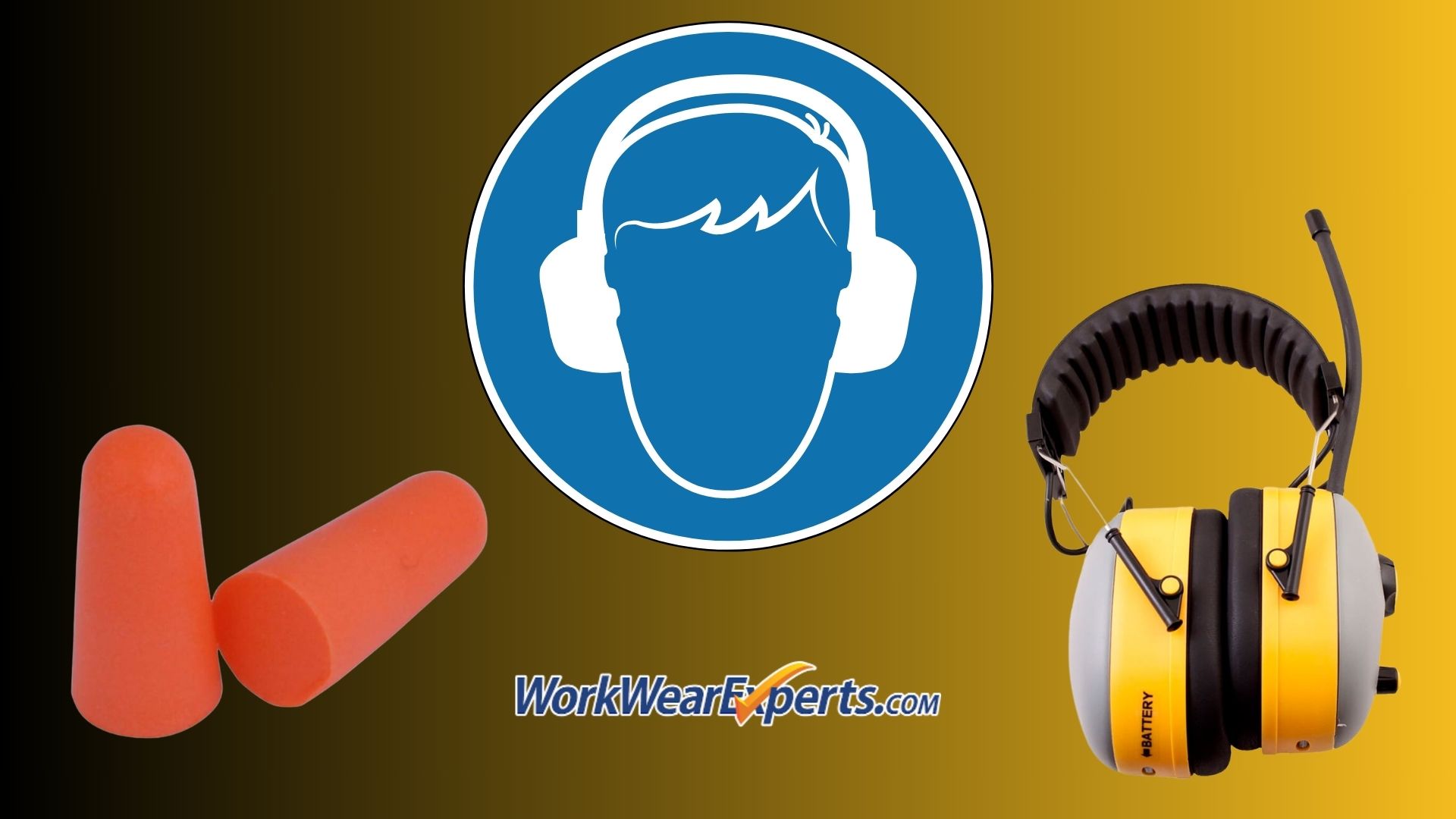
In today's industrial and construction landscapes, noisy work environments are commonplace. From the constant drone of heavy machinery to the sharp bursts of power tools, the levels of sound workers are exposed to can be dangerously high. Protecting one's hearing in such settings is not just a matter of comfort but a critical health and safety issue. This is where hearing protection comes into play.
Noise-induced hearing loss (NIHL) is a significant risk for workers exposed to high noise levels over extended periods. NIHL can occur gradually and is often irreversible, leading to permanent hearing impairment. The long-term impacts of hearing loss go beyond communication difficulties; they can include social isolation, decreased quality of life, and even an increased risk of workplace accidents due to the inability to hear warnings or alarms.
To mitigate these risks, it's essential to use appropriate hearing protection devices. The two main types of hearing protection are ear muffs and ear plugs. Ear muffs cover the entire ear and provide a seal against noise, while ear plugs fit inside the ear canal and block sound waves from entering. Each type has its advantages and is suited to different environments and tasks. Understanding their differences and proper use is key to ensuring effective hearing protection in the workplace.
In this guide, we will explore the importance of hearing protection, delve into the specifics of ear muffs and ear plugs, and provide practical advice on selecting and maintaining these essential devices.
Understanding Noise-Induced Hearing Loss
What is Noise-Induced Hearing Loss (NIHL)?
Noise-Induced Hearing Loss (NIHL) is a permanent hearing impairment resulting from prolonged exposure to high levels of noise. It occurs when the delicate hair cells in the inner ear, responsible for transmitting sound signals to the brain, are damaged. Unlike other types of hearing loss, NIHL can often be prevented with appropriate measures.
How Does NIHL Occur?
NIHL occurs through exposure to harmful noise levels over time or through sudden, intense bursts of sound. The inner ear contains tiny hair cells that convert sound vibrations into electrical signals sent to the brain. When these hair cells are exposed to loud noise, they can become damaged or destroyed. Once damaged, these cells do not regenerate, leading to permanent hearing loss.
Dangerous Decibel Levels
Sound is measured in decibels (dB), and prolonged exposure to noise above certain levels can be harmful. The following decibel levels are considered dangerous:
- 85 dB: Exposure to this level for more than 8 hours can cause hearing damage. This is roughly the noise level of heavy traffic.
- 100 dB: Exposure for more than 15 minutes can lead to hearing loss. This is similar to the noise level of a chainsaw or a rock concert.
- 110 dB: Exposure for more than 1 minute can cause hearing damage. This is the noise level of a jet takeoff from 200 feet away.
- 140 dB: Any exposure to noise at this level can cause immediate and permanent hearing damage. This is equivalent to the sound of a gunshot or fireworks at close range.
Typical Noise Levels in Work Environments
- Construction Sites: Noise levels often range from 80 dB to 120 dB, depending on the equipment being used.
- Factories: Noise levels in manufacturing plants can vary from 70 dB to 110 dB, with certain machinery reaching even higher levels.
- Airports: The noise level on the tarmac can exceed 130 dB during aircraft takeoff and landing.
Understanding these noise levels and their potential harm underscores the importance of implementing effective hearing protection strategies. In the next sections, we will explore the different types of hearing protection devices and how they can be used to safeguard workers' hearing in these noisy environments.
Overview of Hearing Protection Options
Different Types of Hearing Protection Devices
Hearing protection devices are essential for safeguarding against the damaging effects of excessive noise in the workplace. The primary types of hearing protection devices include ear muffs and ear plugs. Each type has unique features and applications, making it important to choose the right one based on the specific work environment and noise levels.
Ear Muffs
| Cargo Safety Earmuff + FM Radio - SNR = 28 |
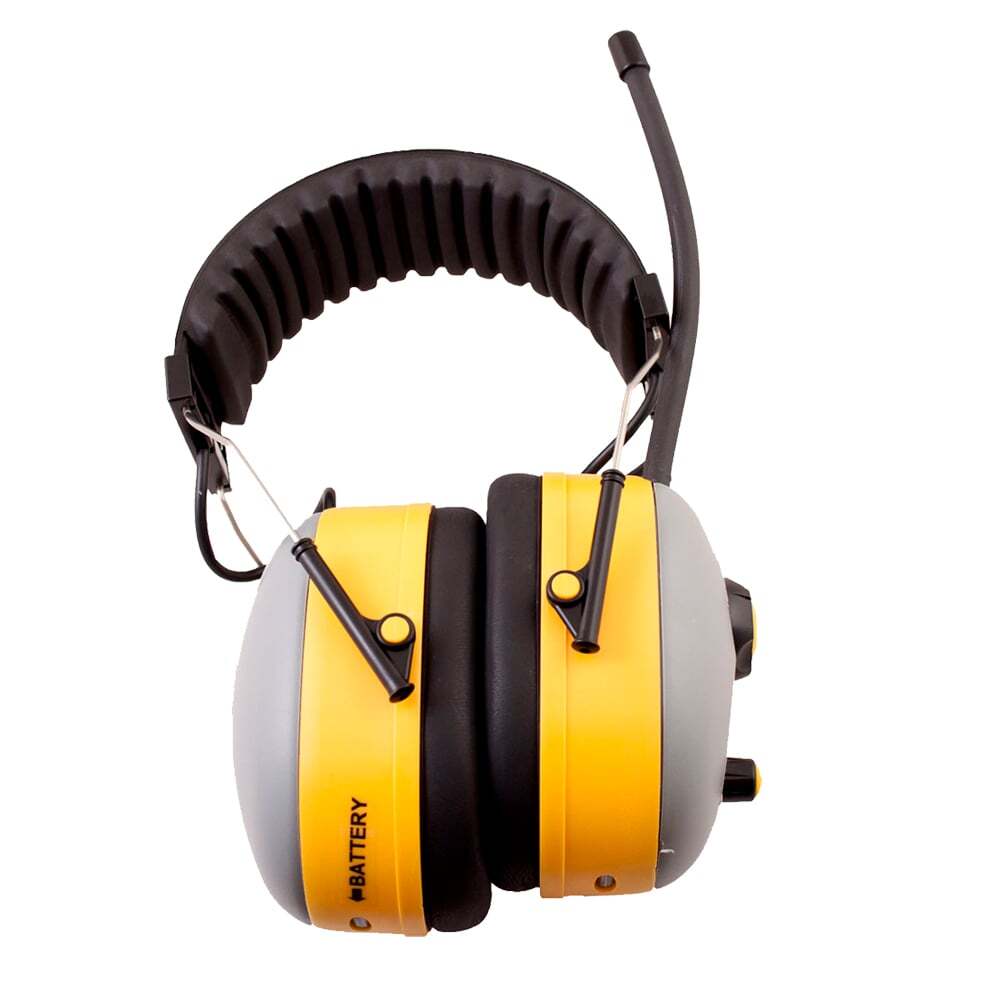 |
Function and Design: Ear muffs are designed to cover the entire outer ear, creating a seal that reduces the amount of noise that reaches the eardrum. They consist of sound-attenuating material, soft ear cushions, and adjustable headbands to ensure a snug fit. Some models come with electronic components that allow for communication or ambient sound enhancement while still providing protection from harmful noise levels.
Pros:
- Ease of Use: Ear muffs are easy to put on and take off, making them convenient for intermittent use.
- Comfort: The cushioned design can be more comfortable for extended wear, particularly in cooler environments.
- Durability: Generally more durable than ear plugs, ear muffs can withstand rough handling and require less frequent replacement.
- Enhanced Features: Electronic ear muffs offer advanced features like noise-cancelling and communication capabilities.
Cons:
- Bulkiness: Ear muffs can be bulky and may interfere with other personal protective equipment (PPE) like hard hats.
- Heat: They can become uncomfortable in hot environments due to reduced ventilation around the ears.
- Cost: Typically more expensive upfront compared to disposable ear plugs.
Ear Plugs
| Ear Plug - Uncorded |
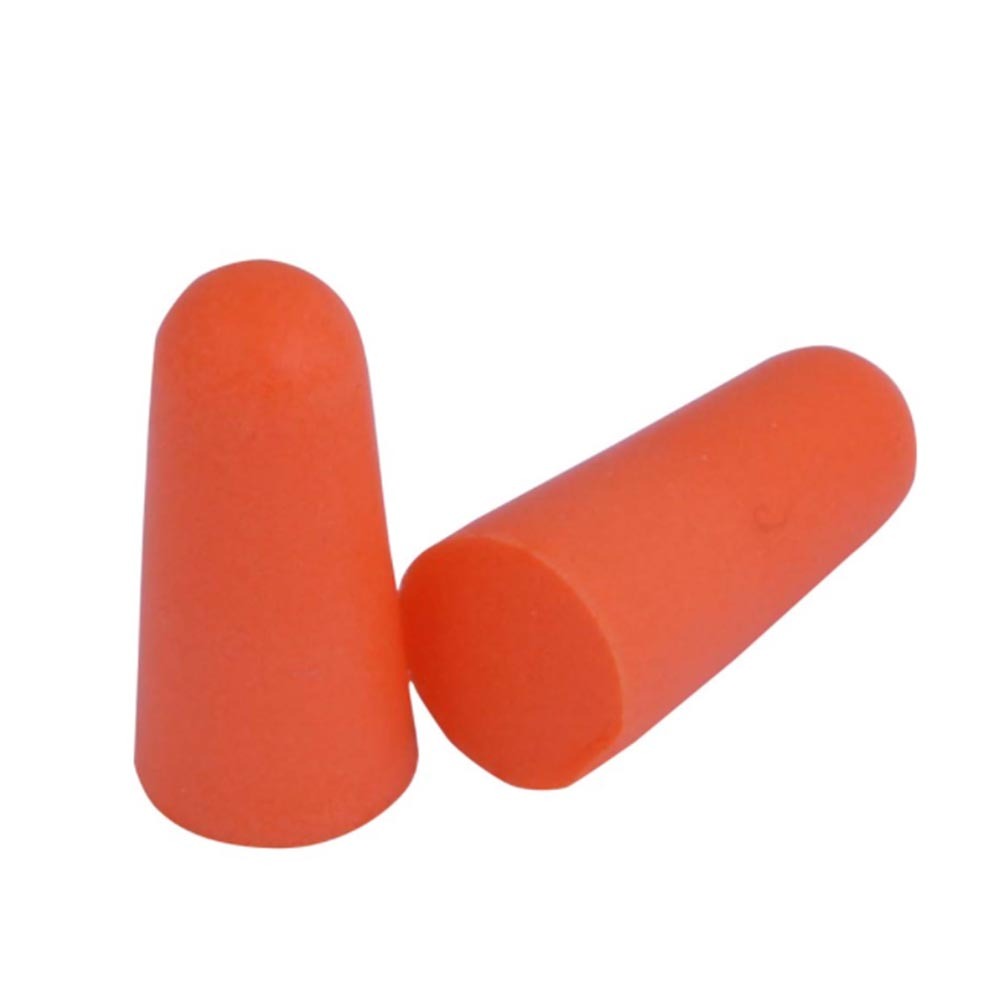 |
Function and Design: Ear plugs are inserted directly into the ear canal, forming a barrier that blocks noise from entering. They come in various materials, including foam, silicone, and custom-moulded options. Foam ear plugs expand to fit the ear canal, while silicone and custom-moulded plugs provide a more tailored fit.
Pros:
- Compactness: Ear plugs are small and lightweight, making them easy to carry and store.
- Versatility: Suitable for use with other PPE, they do not interfere with helmets or safety glasses.
- Cost-Effective: Disposable ear plugs are inexpensive, making them a cost-effective solution for high-turnover or occasional use.
- Hygiene: Single-use ear plugs can be more hygienic, reducing the risk of ear infections.
Cons:
- Fit and Insertion: Proper insertion is crucial for effectiveness, and achieving a correct fit can be challenging for some users.
- Discomfort: Some users may find ear plugs uncomfortable, particularly when used for long periods.
- Durability: Reusable ear plugs require regular cleaning and maintenance, and disposable ones need frequent replacement.
- Less Protection: Foam and basic ear plugs may provide less overall protection compared to high-quality ear muffs, especially in extremely loud environments.
Choosing Between Ear Muffs and Ear Plugs
When deciding between ear muffs and ear plugs, consider factors such as the noise level, duration of exposure, compatibility with other PPE, and personal comfort preferences. In some cases, a combination of both ear muffs and ear plugs may be necessary for maximum protection, especially in environments with extremely high noise levels.
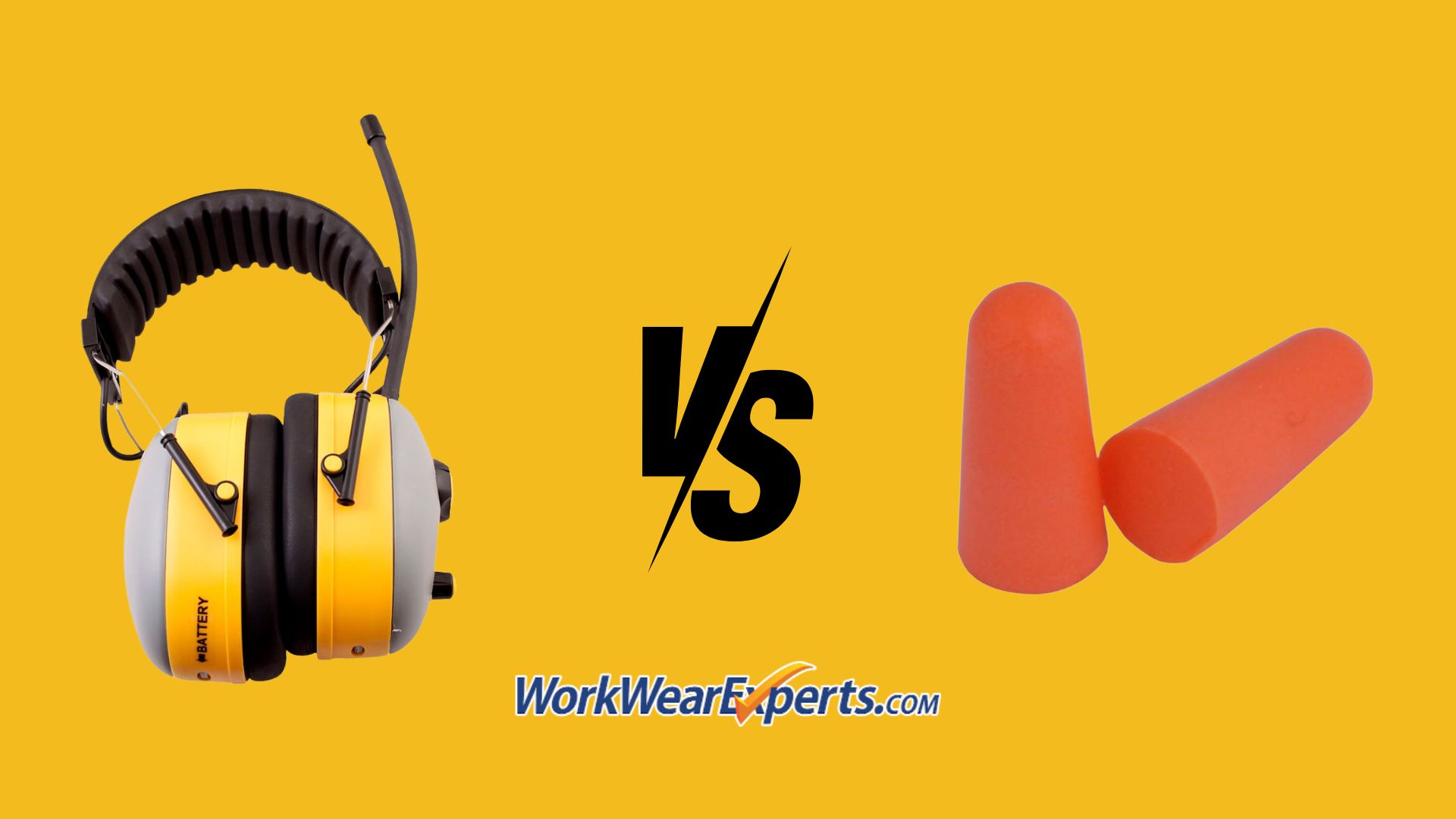
Understanding the pros and cons of each type of hearing protection device will help workers and employers make informed decisions, ensuring adequate protection against the risk of noise-induced hearing loss in the workplace. In the following sections, we will explore the specific features, best use cases, and maintenance practices for ear muffs and ear plugs.
Ear Muffs
Design and Features
Ear muffs are designed to provide a physical barrier to sound, effectively reducing the amount of noise that reaches the eardrum. The key components of ear muffs include:
- Cushioned Ear Cups: These are padded with soft, foam-like materials to create a seal around the ears. The cushioning enhances comfort and helps to block out noise.
- Adjustable Headbands: The headband connects the two ear cups and is adjustable to ensure a secure and comfortable fit. It is typically made of durable, flexible materials such as plastic or metal.
- Sound-Attenuating Material: Inside the ear cups, there is sound-attenuating material that helps to reduce noise levels. This material absorbs sound waves and prevents them from entering the ear.
Types of Ear Muffs
There are two main types of ear muffs: passive and electronic.
Passive Ear Muffs:
- How They Block Sound: Passive ear muffs rely on their physical structure and sound-attenuating materials to block noise. The cushioned ear cups form a seal around the ears, and the internal materials absorb and reduce sound waves.
- Best Use Cases: Passive ear muffs are suitable for environments where continuous, consistent noise levels are present, such as factories, workshops, and construction sites. They are effective for protecting against high-decibel, steady noise from machinery and equipment.
Electronic Ear Muffs:
- How They Work: Electronic ear muffs incorporate electronic components to enhance hearing protection while allowing for communication and situational awareness. They use microphones to pick up ambient sounds, which are then processed and played back at a safe volume inside the ear cups. This allows users to hear conversations and important sounds, such as alarms, while still being protected from harmful noise levels.
- Noise-Canceling Features: Some electronic ear muffs come with active noise-canceling technology that detects and cancels out specific frequencies of noise, providing an additional layer of protection.
- Best Use Cases: Electronic ear muffs are ideal for dynamic work environments where communication is essential, such as construction sites, shooting ranges, and environments where sudden loud noises occur intermittently. They are also beneficial for workers who need to maintain situational awareness while being protected from noise.
| Cargo Safety Earmuff + FM Radio - SNR = 28 |
 |
Maintenance and Care
Proper maintenance and care of ear muffs are crucial to ensure their longevity and effectiveness. Here are some tips:
- Regular Cleaning: Clean the ear cups and cushions regularly with a mild soap solution and a soft cloth. Avoid using harsh chemicals or abrasive materials that can damage the ear muffs.
- Inspect for Damage: Regularly check the ear muffs for signs of wear and tear, such as cracks in the ear cups or headband, and replace any damaged parts immediately.
- Replace Cushions: The ear cushions can wear out over time, reducing the effectiveness of the seal. Replace them as needed to maintain optimal performance.
- Store Properly: Store ear muffs in a cool, dry place when not in use. Avoid leaving them in hot or humid environments, as this can degrade the materials.
- Follow Manufacturer’s Instructions: Always follow the manufacturer's guidelines for maintenance and care, including any specific cleaning agents or procedures recommended for your model.
By understanding the design, types, and proper maintenance of ear muffs, workers can effectively protect their hearing in various noisy work environments.
Ear Plugs
Design and Features
Ear plugs are small devices designed to be inserted into the ear canal to block out noise. They come in various materials and styles to suit different needs and preferences. The main types include foam, silicone, and custom-moulded options.
- Foam Ear Plugs: These are typically made from soft, compressible foam that expands to fit the ear canal. They are disposable and provide a good seal against noise.
- Silicone Ear Plugs: These are made from flexible silicone material. They can be either pre-moulded or moldable. Pre-moulded silicone ear plugs come in a fixed shape, while moldable ones can be shaped to fit the ear.
- Custom-Moulded Ear Plugs: These are made from impressions of the individual’s ear canal, providing a perfect fit. They are usually made from silicone or acrylic and offer the highest level of comfort and protection.
Types of Ear Plugs
Disposable Ear Plugs:
- Convenient but Less Durable: Disposable ear plugs, often made from foam, are designed for one-time use. They are inexpensive and convenient, making them ideal for occasional use or environments where hygiene is a concern.
Reusable Ear Plugs:
- Cost-Effective and Environmentally Friendly: Reusable ear plugs are made from durable materials like silicone or rubber. They can be cleaned and used multiple times, making them a more cost-effective and environmentally friendly option compared to disposable plugs.
Custom Ear Plugs:
- Maximum Comfort and Protection: Custom-moulded ear plugs are made from impressions of the individual’s ears, providing a tailored fit. They offer the best comfort and protection, especially for those who need to wear ear plugs for extended periods.
| Ear Plug - Uncorded |
 |
Best Use Cases
- Foam Ear Plugs: Best suited for environments where noise levels are high but consistent, such as during sleep, travel, or in factories.
- Silicone Ear Plugs: Ideal for swimming, showering, and environments where water exposure is a concern, as well as for general noise reduction.
- Custom Ear Plugs: Suitable for professional musicians, industrial workers, and others who require long-term comfort and high levels of protection in very noisy environments.
How to Insert Ear Plugs
Proper insertion and fit of ear plugs are crucial for effective noise protection. Here’s a step-by-step guide:
- Clean Hands: Wash your hands to avoid introducing dirt or bacteria into your ear.
- Roll the Plug (Foam Ear Plugs): Roll the foam ear plug between your fingers to compress it into a small, crease-free cylinder.
- Insert the Plug: Pull the top of your ear upward and outward to straighten the ear canal. Gently insert the compressed ear plug into the ear canal.
- Hold in Place: Hold the ear plug in place for a few seconds until it expands to fill the ear canal.
- Check the Fit: Ensure the ear plug is snug and secure. It should not be painful, and it should provide a good seal against noise.
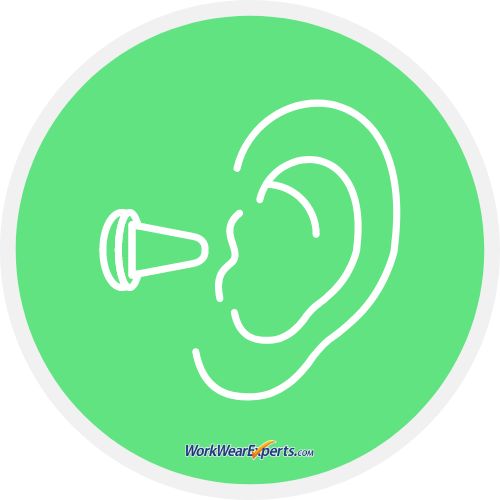
Maintenance and Care
Proper maintenance and care of ear plugs can ensure their effectiveness and longevity:
- Disposable Ear Plugs: These should be discarded after each use to maintain hygiene and effectiveness.
- Reusable Ear Plugs: Clean reusable ear plugs regularly with mild soap and warm water. Allow them to dry completely before storing them in a clean, dry case.
- Custom Ear Plugs: Follow the manufacturer’s instructions for cleaning and care. Typically, they can be cleaned with mild soap and water or a special cleaning solution provided by the manufacturer.
By understanding the different types of ear plugs, their best use cases, and how to properly maintain and care for them, workers can ensure they are effectively protecting their hearing in various noisy environments.
Choosing the Right Hearing Protection
Factors to Consider
When selecting the right hearing protection, several factors need to be considered to ensure effectiveness and comfort:
- Noise Level: Assess the noise level in the work environment. Different devices offer varying levels of noise reduction, measured in decibels (dB). Higher noise levels require devices with higher Noise Reduction Ratings (NRR).
- Comfort: The comfort of the hearing protection device is crucial, especially for long-term wear. Ear muffs with cushioned ear cups or custom-moulded ear plugs offer enhanced comfort for extended use.
- Ease of Use: Consider how easy the device is to use. Ear plugs require proper insertion techniques, while ear muffs are generally easier to put on and take off. Choose a device that suits the user's ability to use it correctly.
- Communication Needs: In environments where communication is essential, electronic ear muffs with built-in microphones and speakers can be beneficial. They allow users to hear conversations and important sounds while still providing protection from harmful noise levels.
- Environment: The work environment plays a significant role in choosing hearing protection. For example, ear plugs might be more suitable for hot environments, while ear muffs might be preferred in colder conditions.
Fit Testing
Fit testing is essential to ensure that the hearing protection device provides the intended level of protection. Poorly fitted devices can significantly reduce their effectiveness. Here’s why fit testing is important:
- Proper Seal: For ear plugs, a proper seal in the ear canal is necessary to block out noise effectively. Fit testing ensures that the ear plugs are inserted correctly and provide the required noise reduction.
- Leakage Prevention: Ear muffs need to fit snugly around the ears without gaps. Fit testing helps identify any issues with the seal, such as interference from hair, glasses, or other PPE.
- Compliance and Safety: Regular fit testing can ensure that employees are using the devices correctly and consistently, which is crucial for maintaining compliance with safety regulations and protecting workers’ hearing.
Combination of Devices
In some scenarios, combining ear muffs and ear plugs might be necessary for maximum protection, particularly in environments with extremely high noise levels. This dual protection can provide an additional layer of safety:
- Extreme Noise Levels: In environments where noise levels exceed 100 dB, using both ear muffs and ear plugs can provide superior protection. This is often seen in industries like aviation, heavy manufacturing, and during the use of very loud machinery.
- Intermittent Loud Noises: In settings where workers are exposed to sudden, loud noises in addition to continuous background noise, the combination of ear muffs and ear plugs can help mitigate the impact of these bursts.
- Enhanced Communication: Electronic ear muffs combined with ear plugs can allow workers to protect their hearing while still being able to communicate effectively, thanks to the electronic components in the ear muffs.
Choosing the right hearing protection involves evaluating the specific needs of the work environment, the level of noise exposure, and the comfort and preferences of the users. Proper fit testing and considering the potential need for combining devices can ensure that workers are adequately protected from the risks of noise-induced hearing loss.
Conclusion
In today's industrial and construction environments, workers are frequently exposed to high levels of noise from machinery and tools, posing significant risks to their hearing. Noise-induced hearing loss (NIHL) is a critical health issue that can lead to permanent hearing impairment, social isolation, and increased workplace accidents.
To mitigate these risks, it's crucial to use appropriate hearing protection devices. Ear muffs and ear plugs are the primary options available, each offering unique benefits. Ear muffs provide comprehensive coverage and are easy to use, making them ideal for intermittent use in various environments. Ear plugs, available in foam, silicone, and custom-moulded forms, offer compact and versatile protection suitable for consistent noise exposure and environments requiring additional PPE compatibility.
When choosing hearing protection, consider factors such as noise level, comfort, ease of use, and communication needs. Proper fit testing ensures the device works effectively, while combining ear muffs and ear plugs can offer maximum protection in extremely noisy settings.
Protect your hearing today by evaluating your work environment and selecting the right hearing protection. Visit workwearexperts.com to explore our range of ear muffs and ear plugs, designed to provide the best protection for your needs. If you have any questions or need further assistance, our expert team is ready to help. Prioritize your hearing health and stay safe in the workplace!
Your email address cannot be published. Required fields are marked*
